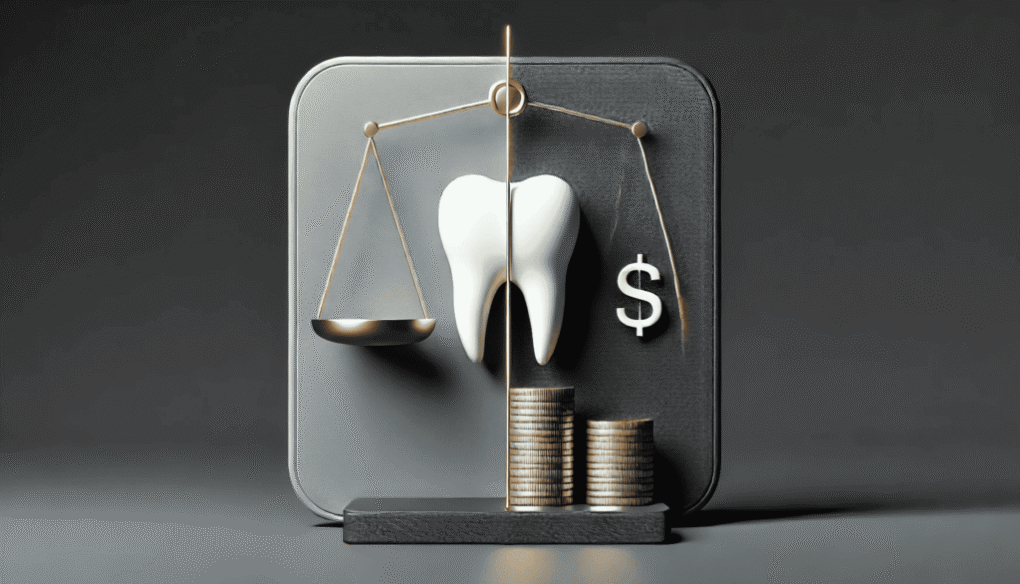In Germany, statutory health insurance (GKV) offers only basic dental services. It covers routine check-ups, basic fillings, and partial subsidies for standard prosthetics. However, expensive treatments like implants or ceramic crowns require large out-of-pocket payments. Dental supplementary insurance can reimburse up to 100% of these costs. It also allows patients access to more modern treatment options. According to G.business, citing WELT, 18.5 million Germans already have such insurance.
Examples of covered services:
- Implants, crowns, and inlays with full or partial reimbursement
- Professional dental cleanings (PZR) covered multiple times a year
- Aesthetic services like tooth whitening
- Orthodontics for children and adults, depending on the plan
With or without a waiting period: which is right for you
A waiting period means benefits only start 3–12 months after signing up. This makes the monthly premiums more affordable but delays coverage for urgent treatments. No-wait plans start providing benefits immediately, which is essential if you have upcoming dental work. These plans are typically 10–20% more expensive than those with waiting periods. Choosing the right option depends on your current dental health and financial readiness. If you anticipate urgent care, no-wait is the safer choice.
Examples of usage:
- Waiting period: Great for those planning treatment in the future without urgency
- No-wait plan: Best for upcoming implants or periodontal therapy
- Long-term planning: Lower costs over time with a waiting period plan
How much does dental supplementary insurance cost
The monthly cost depends on your age, health, and coverage level. Basic plans start at €10–€20 and cover preventive care and simple treatments. Mid-range plans cost €20–€40 and include implants and more extensive prosthetics. Premium plans range from €40–€80 and offer nearly complete coverage, including aesthetic treatments. Even a single expensive treatment can make the insurance pay for itself. Many policyholders save thousands over several years.
Examples of costs and savings:
- PZR cleaning: €100 without insurance → free with coverage
- Implant: €4,000 without insurance → €0–€500 with premium plan
- Crown replacement: €900 without insurance → €100 with mid-range plan
Digital tools and platforms for comparison
Online platforms make it easy to compare dental insurance plans in Germany. Dentolo offers its own policies and a network of partner dentists with transparent pricing. Check24 provides a detailed comparison of tariffs, including filters for waiting periods and specific benefits. Ottonova is a fully digital provider offering plans without waiting periods, perfect for tech-savvy customers. Using these tools helps you find a plan tailored to your needs and budget. They also simplify the application process.
Examples of top comparison platforms:
- Dentolo – Simple management, partner network, own insurance products
- Check24 – Large market overview, strong filtering options
- Ottonova – Fully digital, no waiting period, instant access
How to choose the best dental supplementary insurance
Start by checking whether the policy covers your planned treatments. Consider the waiting period and choose accordingly based on urgency. Use comparison portals like Check24 or Verivox for transparent market data. Pay attention to reimbursement limits, especially in the first few years. Think about long-term costs and whether premiums will rise with age. Read customer reviews for insights into service and reliability.
Examples of important selection criteria:
- Coverage for implants, crowns, or PZR
- Reimbursement limits in the first years
- Waiting period requirements
- Price stability over time
- Customer service ratings
Common mistakes to avoid
Many people underestimate how important it is to read the small print. Ignoring the waiting period can lead to unpleasant surprises if you need urgent care. Some choose based only on the lowest price and end up with insufficient coverage. Overlooking reimbursement limits can result in unexpected out-of-pocket costs. Finally, forgetting to check if aesthetic or high-quality materials are included can reduce treatment options. Proper research ensures you get value for your money.
Examples of common mistakes:
- Choosing only by price, ignoring coverage
- Not checking for waiting periods
- Forgetting to check reimbursement caps
- Assuming all aesthetic treatments are included
In a country where healthcare is considered a right, dental health still comes at a price — and often a steep one. Public insurance may keep you afloat for basic needs, but when it comes to safeguarding your smile against life’s unexpected turns, relying solely on the GKV is like sailing without a lifeboat. Dental supplementary insurance is not a luxury; it is a shield, a calculated step toward preserving both your health and your finances. The difference between enduring pain while counting the cost and walking out of a clinic with confidence often lies in a single decision: to insure, or not to insure. And in Germany, 18.5 million people have already answered that question for themselves — with a resounding yes.
Stay connected for news that works — timely, factual, and free from opinion — and insights that matter now: Why Jack Daniel’s Is Betting on Blackberry Whiskey – and What It Means for the Market
